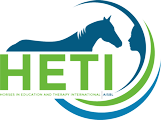The Effect of Hippotherapy on Static and Dynamic Balance and Reaction Time in Autism Spectrum Disorder 2016-2017
€10.00
| Author | Sara Mirzabeigi Fini, Yaser Kazemzadeh, Yahya Sokhanguei |
|---|---|
| Year | 2016/2017 |
The term hippotherapy refers to how occupational therapy, physical therapy, and speech- language pathology professionals use evidence-based practice and clinical reasoning in the purposeful manipulation of equine movement to engage sensory, neuromotor, and cognitive systems to achieve functional outcomes (American Hippotherapy Association, 2016). This paper discusses the effect of 14 weeks of hippotherapy on static balance, dynamic balance and reaction time of individuals with autism spectrum disorder. The participants consisted of 24 males between 7-18 years old, diagnosed with autism spectrum disorder and randomly placed in experimental and control groups (N=12 for each group). The experimental group participated in 14 weeks of hippotherapy sessions. The control group did not engage in any hippotherapy or any physical activity outside of their ordinary life during the research period. The statistical analysis shows significance in the scores of the static and dynamic balance of the experimental group versus the control group as compared with the time before the exercises (p=0.0001), (p=0.019). In contrast, no significant change was seen in the reaction time scores of the participants as compared with the time before hippotherapy intervention (p=0.123). The result shows that 14 sessions of hippotherapy had a positive effect on static and dynamic balance of people diagnosed with autism spectrum disorder, with improvement in balance systems and physical statue, especially flexibility and strength, but shows no specific changes in the score of reaction time.

